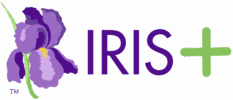The following IRIS Modules are available in the IRIS+ platform (and we’re adding more all the time). Click the arrow for a more detailed description of each module. Once you’ve selected the module(s) for your school or district, contact us to start the setup process.
-

Accommodations: Instructional and Testing Supports for Students with Disabilities
PD Hours: 2
This module overviews instructional and testing accommodations for students with disabilities, explains how accommodations differ from other kinds of instructional adaptations, defines the four categories of accommodations, and describes how to implement accommodations and evaluate their effectiveness for individual students.
Objectives
By completing this module and reviewing its accompanying activities, you will be able to:
- Distinguish accommodations from modifications and instructional strategies/interventions
- Describe how instructional and testing accommodations help students with disabilities gain access to the general education curriculum and to assessments
- Understand the responsibilities of the IEP team, including the role of teachers, for making accommodation decisions for students with disabilities
- Select appropriate accommodations that address barriers presented by a student’s disabilities and take into account her or his learning goals
- Identify how teachers can ensure that students receive the greatest (maximum) benefit from accommodations
- Use objective data to determine an accommodation’s effectiveness
-

Addressing Challenging Behaviors (Part 1, Elementary): Understanding the Acting-Out Cycle
PD Hours: 2.5
The first in a two-part series, this module discusses challenging behavior in terms of the phases of the acting-out cycle and offers strategies and tips for responding to students in each phase.
Objectives
By completing the entire Perspectives & Resources section and reviewing the accompanying activities, the learner will:
- Understand why educators need to be able to effectively address challenging behaviors
- Be familiar with how culture can influence challenging behaviors
- Be familiar with the seven phases of the acting-out cycle
- Be able to recognize the behavioral characteristics associated with each phase of the acting-out cycle
- Understand how to appropriately respond to students in different phases of the acting-out cycle
-

Addressing Challenging Behaviors (Part 1, Secondary): Understanding the Acting-Out Cycle
PD Hours: 2.5
The first in a two-part series, this module describes strategies that teachers in secondary classrooms can implement to prevent or address challenging behaviors.
Objectives
By completing the entire Perspectives & Resources section and reviewing the accompanying activities, the learner will:
- Understand how challenging behavior negatively affects the classroom environment
- Recognize the importance of using strategies to address challenging behavior
- Be familiar with using low-intensity strategies to address challenging behavior
- Be familiar with using differential reinforcement of alternative behavior to address challenging behavior
- Identify appropriate use of strategies in video examples and non-examples
-

Addressing Challenging Behaviors (Part 2, Elementary): Behavioral Strategies
PD Hours: 2
The second in a two-part series, this module describes strategies that teachers in elementary classrooms can implement to prevent or address challenging behaviors.
Objectives
By completing the entire Perspectives & Resources section and reviewing the accompanying activities, the learner will:
- Understand how challenging behavior negatively affects the classroom environment
- Recognize the importance of using strategies to address challenging behavior
- Be familiar with using low-intensity strategies to address challenging behavior
- Be familiar with using differential reinforcement of alternative behavior to address challenging behavior
- Identify appropriate use of strategies in video examples and non-examples
-

Addressing Challenging Behaviors (Part 2, Secondary): Behavioral Strategies
PD Hours: 2
The second in a two-part series, this module describes strategies that teachers in secondary classrooms can implement to prevent or address challenging behaviors.
Objectives
By completing the entire Perspectives & Resources section and reviewing the accompanying activities, the learner will:
- Understand how challenging behavior negatively affects the classroom environment
- Recognize the importance of using strategies to address challenging behavior
- Be familiar with using low-intensity strategies to address challenging behavior
- Be familiar with using differential reinforcement of alternative behavior to address challenging behavior
- Identify appropriate use of strategies in video examples and non-examples
-

Autism Spectrum Disorder (Part 1): An Overview for Educators
PD Hours: 2
This module provides information on the early signs of autism spectrum disorder (ASD), as well as an overview of the difference between a medical diagnosis and an educational determination of ASD. Resources include notes on instructional considerations for teachers who have children and students with ASD in their classrooms, as well as things to keep in mind when working with the families of those children and students.
Objectives
By completing this module, learners will:
- Understand that the strengths and needs of students with ASD vary greatly
- Be aware of the early signs of ASD
- Know the difference between a medical diagnosis of ASD and an educational determination of autism
- Be able to identify key IEP and IFSP team members
- Understand various factors that might affect family members of students with ASD
- Be familiar with strategies that teachers can use when working with students with ASD
-

Autism Spectrum Disorder (Part 2): Evidence-Based Practices
PD Hours: 2
This module, second in a two-part series, highlights strategies that have been shown to be effective in teaching appropriate behaviors and skills and decreasing inappropriate behaviors with children and youth with autism spectrum disorder (ASD). It next explores several strategies that are particularly effective with young children, elementary and middle school students, and high school students.
Objectives
By completing the entire Perspectives & Resources section and reviewing the accompanying activities, the learner will:
- Know the defining characteristics of ASD
- Identify the four steps educators and practitioners can use to make an informed decision when selecting an EBP
- Be familiar with EBPs that are effective for children and youth with ASD
- Understand how and when to use the five evidence-based practices that are referred to as foundational strategies
- Distinguish between focused interventions and comprehensive treatment programs
-
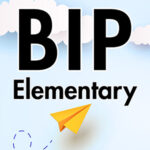
Behavioral Intervention Plans (Elementary): Developing a Plan to Address Student Behavior
PD Hours: 2
This module explores the steps for developing a behavioral intervention plan. It includes identifying appropriate behaviors to replace the interfering behavior, selecting and implementing interventions that address the function of the behavior, monitoring students’ responses to the interventions, and making adjustments based on the data.
Objectives
By completing this module’s Perspectives & Resources section and reviewing its accompanying activities, the learner will be able to:
- Recognize the essential components and the benefits of a behavioral intervention plan
- State the four primary functions of behavior
- Identify a replacement behavior that serves the same function as the target behavior
- Choose a function-based intervention that addresses the student’s individualized needs and the function of the target behavior
- Explain considerations for implementing behavioral interventions and different ways to monitor student progress
- Examine progress monitoring data to determine whether an intervention should be continued with or without adjustments
-
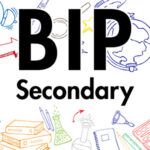
Behavioral Intervention Plans (Secondary): Developing a Plan to Address Student Behavior
PD Hours: 2
This module explores the steps for developing a behavioral intervention plan. It includes identifying appropriate behaviors to replace the interfering behavior, selecting and implementing interventions that address the function of the behavior, monitoring students’ responses to the interventions, and making adjustments based on the data.
Objectives
By completing this module’s Perspectives & Resources section and reviewing its accompanying activities, the learner will be able to:
- Recognize the essential components and the benefits of a behavioral intervention plan
- State the four primary functions of behavior
- Identify a replacement behavior that serves the same function as the target behavior
- Choose a function-based intervention that addresses the student’s individualized needs and the function of the target behavior
- Explain considerations for implementing behavioral interventions and different ways to monitor student progress
- Examine progress monitoring data to determine whether an intervention should be continued with or without adjustments
-

Behavioral Principles: The Basics of Understanding Student Behavior
PD Hours: 2
This module examines the ABC (antecedent-behavior-consequence) model, which illustrates how environmental factors can influence behaviors before and after they occur. This module also explores other foundational concepts involved in understanding, addressing, and changing behavior.
Objectives
By completing the entire Perspectives & Resources section and reviewing the accompanying activities, the learner will:
- Understand that all behavior is learned
- Be familiar with the ABC model
- Understand how antecedents and consequences can influence behavior
- Recognize that for behavioral reinforcement to be effective, it must be meaningful for students
- Understand that for behavioral changes to be successful, students must learn to generalize behaviors across varied conditions and over time.
-

Classroom Behavior Management (Part 1): Key Concepts and Foundational Practices
PD Hours: 2
This module overviews the effects of disruptive behaviors as well as important key concepts and foundational practices related to effective classroom behavior management, including cultural influences on behavior, the creation of positive climates and structured classrooms, and much more.
Objectives:
After completing the module, learners will:
- Understand how disruptive behavior negatively affects instruction and learning
- Understand the importance of comprehensive classroom behavior management
- Recognize that classroom behavior management should align with the broader school-wide behavior management system
- Be familiar with how culture can influence behavior
- Be aware of key concepts related to behavior and foundational behavior management practices needed to implement comprehensive classroom behavior management
-

Classroom Behavior Management (Part 2, Elementary): Developing a Behavior Management Plan
PD Hours: 2
This module reviews the major components of a classroom behavior management plan (including a statement of purpose, rules, procedures, consequences, a crisis plan, and an action plan) and guides users through the steps of creating their own classroom behavior management plan.
Objectives
After completing this module, learners will:
- List the core components of a comprehensive classroom behavior management plan
- Describe the key features of each of those components
- Understand how to develop, teach, and implement these components
- Consider how culture influences student and teacher behavior
- Develop the components of a comprehensive classroom behavior management plan in a culturally respectful and sustaining manner
- Develop a personalized comprehensive classroom behavior management plan
-

Classroom Behavior Management (Part 2, Secondary): Developing a Behavior Management Plan
PD Hours: 2
Developed specifically with middle and high school teachers in mind (e.g., 6th-12th grade), this module reviews the major components of a classroom behavior management plan (including rules, procedures, and consequences) and guides users through the steps of creating their own classroom behavior management plan. The module is a companion to Classroom Behavior Management (Part 1): Key Concepts and Foundational Practices.
Objectives
By completing the entire Perspectives & Resources section and reviewing the accompanying activities, learners will:
- List the core components of a comprehensive classroom behavior management plan
- Describe the key features of each of those components
- Understand how to develop, teach, and implement these components
- Consider how culture influences student and teacher behavior
- Develop the components of a comprehensive classroom behavior management plan in a culturally respectful and sustaining manner
- Develop a personalized comprehensive classroom behavior management plan
-

Early Childhood Behavior Management: Developing and Teaching Rules
PD Hours: 1.5
This module includes information on how to create developmentally appropriate behavior rules for early childhood classrooms so that they link to a given school’s behavior expectations. The importance of communication with families about rules and expected behaviors is also stressed.
Objectives
By completing this module, learners will:
- Be able to describe the importance of establishing classroom rules for young children that align with the behavior expectations of the school
- Understand the guidelines for effectively developing and displaying rules for early childhood environments
- Be able to identify different strategies for teaching and reinforcing rules for young children
- Understand the importance of communicating with families about rules and expected behaviors
-

Executive Functions (Part 1): Understanding Why Some Students Struggle
PD Hours: 2
This module explores executive functions and explains why many students struggle with cognitive processes related to learning. It then examines why it’s critical for teachers to explicitly teach these students when, where, and how to use effective study strategies to help them succeed academically.
Objectives
By completing the entire Perspectives & Resources section and reviewing the accompanying activities, the learner will:
- Understand why some students struggle with academic tasks
- Understand the differences in how successful and struggling students learn information
- Know that students with learning difficulties often need to be explicitly taught study skills strategies
-

Executive Functions (Part 2): Strategies to Improve Students’ Academic Performance
PD Hours: 2
This companion to the Executive Functions (Part 1) module reiterates the importance of teachers providing explicit instruction to students with executive function difficulties on the use of effective strategies. It then overviews a number of these strategies: graphic organizers, note-taking, mnemonics, organizing materials, time management, comprehension strategies, and self-regulation strategies.
Objectives
By completing the entire Perspectives & Resources section and reviewing the accompanying activities, the learner will:
- Understand that students with learning difficulties might need to be explicitly taught study skills strategies
- Recognize that there are different types of study skills that can aid students in learning
-

Family Engagement: Collaborating with Families of Students with Disabilities
PD Hours: 2
This module addresses the importance of engaging the families of students with disabilities in their child’s education. It highlights some of the key factors that affect these families and outlines some practical ways to build relationships and create opportunities for involvement.
Objectives
By completing this module’s Perspectives & Resources section and reviewing its accompanying activities, you will be able to:
- Understand the importance of family engagement
- Be aware of the actions educators can take to engage families
- Recognize some of the challenges that families who have children with disabilities may face
- Identify practical ways to build positive relationships with parents of children with disabilities and to create opportunities for them to be involved
-

Functional Behavioral Assessment (Elementary): Identifying the Reasons for Student Behavior
PD Hours: 2
This module explores the importance of discovering the reasons that students engage in challenging behavior and outlines steps for conducting a functional behavioral assessment.
Objectives
By completing this module’s Perspectives & Resources section and reviewing its accompanying activities, the learner will be able to:
- Identify the four categories of behavioral functions
- Determine whether an FBA is warranted
- Implement practices to minimize subjectivity when interpreting a behavior’s function
- Define student behavior in clear and specific terms
- Identify types of indirect and descriptive assessments
- Formulate a hypothesis statement based on student data
-

Functional Behavioral Assessment (Secondary): Identifying the Reasons for Student Behavior
PD Hours: 2
This module explores the importance of discovering the reasons that students engage in challenging behavior and outlines steps for conducting a functional behavioral assessment.
Objectives
By completing this module’s Perspectives & Resources section and reviewing its accompanying activities, the learner will be able to:
- Identify the four categories of behavioral functions
- Determine whether an FBA is warranted
- Implement practices to minimize subjectivity when interpreting a behavior’s function
- Define student behavior in clear and specific terms
- Identify types of indirect and descriptive assessments
- Formulate a hypothesis statement based on student data
-
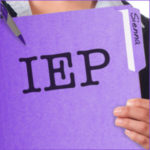
IEPs: Developing High-Quality Individualized Education Programs
PD Hours: 3
This module details the process of developing high-quality individualized education programs (IEPs) for students with disabilities. The module discusses the requirements for IEPs as outlined in the Individuals with Disabilities Education Act (IDEA) with implications of the Supreme Court’s ruling in Endrew F. v. Douglas County School District *.
*The content addressed in this module is based on federal law and regulations. State and local education agencies may have additional requirements. The information in this document is not intended to be a replacement for careful study of the Individuals with Disabilities Education Act and its implementing regulations.
Objectives
By completing the entire Perspectives & Resources section and reviewing the accompanying activities, you should be able to:
- Identify the purpose and components of a high-quality IEP
- Understand key procedural and substantive requirements of a high-quality IEP
- Recognize the most common procedural and substantive errors made by IEP teams
- Describe how a high-quality IEP is developed around the unique needs of each student
- Identify the elements of a high-quality PLAAFP statement
- Explain how to develop challenging, ambitious, and measurable goals
- Identify the elements that should be included in a statement of the individualized services and supports to be provided to a student
- Explain the importance of documenting a student’s progress toward meeting his or her IEP goals and reporting that progress to parents
-

Progress Monitoring: Mathematics
PD Hours: 2
This resource introduces users to progress monitoring in mathematics, a type of formative assessment in which student learning is evaluated to provide useful feedback about performance to both learners and teachers.
Objectives
By completing the entire Perspectives & Resources section and reviewing the accompanying activities, you should be able to:
- Identify the different types of classroom assessments
- Understand how progress monitoring, in particular general outcome measurement (GOM), can inform instruction
- Administer, score, and graph GOM measures
- Evaluate student data to make informed instructional decisions
- Use graphs to facilitate communication with students, parents, and other educators
-

Progress Monitoring: Reading
PD Hours: 2
This module introduces users to progress monitoring in reading, a type of formative assessment in which student learning is evaluated to provide useful feedback about performance to both learners and teachers.
Objectives
By completing the entire Perspectives & Resources section and reviewing the accompanying activities, you should be able to:
- Identify the different types of classroom assessments
- Understand how progress monitoring, in particular general outcome measurement (GOM), can inform instruction
- Administer, score, and graph GOM measures
- Evaluate student data to make informed instructional decisions
- Use graphs to facilitate communication with students, parents, and other educators
-

Secondary Transition: Helping Students with Disabilities Plan for Postsecondary Settings - Coming Soon
PD Hours: 1.5
This module focuses on helping students with disabilities successfully transition from high school to postsecondary settings. Among other topics, it discusses the various components of transition planning and the importance of engaging students in this process.
Objectives
By completing this module, the learner will be able to:
- State the importance of secondary transition planning
- Describe the unique challenges of secondary transition for students with disabilities
- Explain how educators can promote students’ self-determination throughout transition planning
- Identify and summarize the components of secondary transition planning
-

Students with Significant Cognitive Disabilities: Supports in the General Education Classroom
PD Hours: 2
This module describes the benefits of including students with significant cognitive disabilities in general education classrooms. It also offers information on how teachers can plan for and teach these students.
Objectives
By completing the entire Perspectives & Resources section and reviewing the accompanying activities, the learner will:
- Recognize the value of including students with significant cognitive disabilities in general education classrooms.
- Explain the importance of general education curriculum access for all students.
- Understand the types of services and supports that can be used to support students with significant cognitive disabilities.
- Describe strategies to address the instructional and communication needs of students with significant cognitive disabilities in general education environments.
-
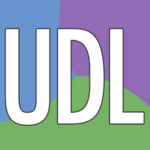
Universal Design for Learning: Designing Learning Experiences That Engage and Challenge All Students
PD Hours: 2.5
This module examines the Universal Design for Learning (UDL) framework and discusses how educators can apply UDL to proactively design learning experiences that are flexible enough to challenge and engage all students and that promote learner agency.
Objectives
By completing the entire Perspectives & Resources section and reviewing the accompanying activities, the learner will:
- Recognize the value of addressing learner variability
- Understand the importance of facilitating learner agency
- Understand that barriers live in the design of instruction, not in students
- Be familiar with the principles of Universal Design for Learning (UDL)
- Be able to apply the UDL principles to the components of instruction
- Recognize that applying the UDL framework is an iterative process
 Accommodations: Instructional and Testing Supports for Students with Disabilities
Accommodations: Instructional and Testing Supports for Students with Disabilities Addressing Challenging Behaviors (Part 1, Elementary): Understanding the Acting-Out Cycle
Addressing Challenging Behaviors (Part 1, Elementary): Understanding the Acting-Out Cycle Addressing Challenging Behaviors (Part 1, Secondary): Understanding the Acting-Out Cycle
Addressing Challenging Behaviors (Part 1, Secondary): Understanding the Acting-Out Cycle Addressing Challenging Behaviors (Part 2, Elementary): Behavioral Strategies
Addressing Challenging Behaviors (Part 2, Elementary): Behavioral Strategies Addressing Challenging Behaviors (Part 2, Secondary): Behavioral Strategies
Addressing Challenging Behaviors (Part 2, Secondary): Behavioral Strategies Autism Spectrum Disorder (Part 1): An Overview for Educators
Autism Spectrum Disorder (Part 1): An Overview for Educators Autism Spectrum Disorder (Part 2): Evidence-Based Practices
Autism Spectrum Disorder (Part 2): Evidence-Based Practices Behavioral Intervention Plans (Elementary): Developing a Plan to Address Student Behavior
Behavioral Intervention Plans (Elementary): Developing a Plan to Address Student Behavior Behavioral Intervention Plans (Secondary): Developing a Plan to Address Student Behavior
Behavioral Intervention Plans (Secondary): Developing a Plan to Address Student Behavior Behavioral Principles: The Basics of Understanding Student Behavior
Behavioral Principles: The Basics of Understanding Student Behavior Classroom Behavior Management (Part 1): Key Concepts and Foundational Practices
Classroom Behavior Management (Part 1): Key Concepts and Foundational Practices Classroom Behavior Management (Part 2, Elementary): Developing a Behavior Management Plan
Classroom Behavior Management (Part 2, Elementary): Developing a Behavior Management Plan Classroom Behavior Management (Part 2, Secondary): Developing a Behavior Management Plan
Classroom Behavior Management (Part 2, Secondary): Developing a Behavior Management Plan Early Childhood Behavior Management: Developing and Teaching Rules
Early Childhood Behavior Management: Developing and Teaching Rules Executive Functions (Part 1): Understanding Why Some Students Struggle
Executive Functions (Part 1): Understanding Why Some Students Struggle Executive Functions (Part 2): Strategies to Improve Students’ Academic Performance
Executive Functions (Part 2): Strategies to Improve Students’ Academic Performance Family Engagement: Collaborating with Families of Students with Disabilities
Family Engagement: Collaborating with Families of Students with Disabilities Functional Behavioral Assessment (Elementary): Identifying the Reasons for Student Behavior
Functional Behavioral Assessment (Elementary): Identifying the Reasons for Student Behavior Functional Behavioral Assessment (Secondary): Identifying the Reasons for Student Behavior
Functional Behavioral Assessment (Secondary): Identifying the Reasons for Student Behavior IEPs: Developing High-Quality Individualized Education Programs
IEPs: Developing High-Quality Individualized Education Programs Progress Monitoring: Mathematics
Progress Monitoring: Mathematics Progress Monitoring: Reading
Progress Monitoring: Reading Secondary Transition: Helping Students with Disabilities Plan for Postsecondary Settings - Coming Soon
Secondary Transition: Helping Students with Disabilities Plan for Postsecondary Settings - Coming Soon Students with Significant Cognitive Disabilities: Supports in the General Education Classroom
Students with Significant Cognitive Disabilities: Supports in the General Education Classroom Universal Design for Learning: Designing Learning Experiences That Engage and Challenge All Students
Universal Design for Learning: Designing Learning Experiences That Engage and Challenge All Students